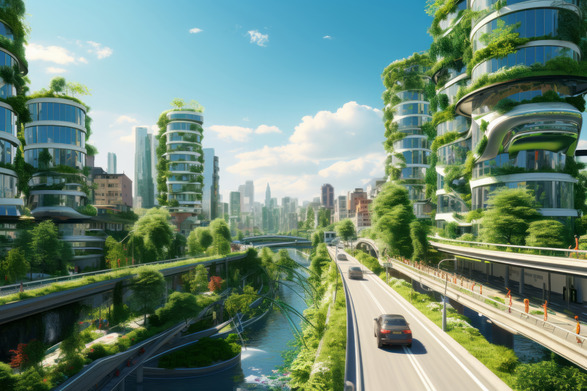
Net-positive buildings represent a revolutionary step forward in sustainable design, aiming to generate more energy than they consume. Unlike net-zero buildings, which simply balance energy consumption, net-positive structures produce an excess that can be returned to the grid or repurposed for other uses. By integrating renewable energy systems and employing passive design techniques, these buildings significantly reduce their environmental footprint.
Incorporating traditional architectural practices, such as climate-responsive design and the use of locally sourced materials, further enhances energy efficiency and sustainability. Strategic elements like optimal building orientation, effective insulation, and cross-ventilation reduce reliance on energy-intensive systems.
Additionally, the use of efficient water fixtures and equipment helps achieve water neutrality or even a positive water balance, while mindful waste management practices further minimize environmental impact.
The construction industry is increasingly focused on mitigating its environmental impact by adopting sustainable building materials that repurpose existing resources and minimize waste. Innovative materials, such as cardboard or chipboard panels, are designed to reduce carbon footprints by reusing materials rather than producing new ones. Sourcing materials within a 300-kilometer radius of the construction site fosters architecture that resonates with the local context and community. To drive meaningful change, innovation should be focused on optimizing available resources.
Materials like Aerocon panels and sandwich panels, composed of two lightweight fiber-reinforced cement sheets with a tongue-and-groove joint system, allow for rapid on-site assembly, thereby reducing construction time.
As India moves towards a future characterized by rapid urbanization, a growing population, and increasing environmental awareness, its built environment is poised for a transformative shift. Once considered niche, green buildings are now becoming a driving force for sustainable development in the country, offering hope for a greener future. Indian regulatory frameworks such as the Energy Conservation Building Code (ECBC) and GRIHA are promoting sustainability, while technological advancements—from passive design strategies to smart technologies—are enabling more efficient resource use.
Green buildings, with their long-term benefits, are not only environmentally responsible but also economically viable, offering returns that far exceed their initial costs.
For students aspiring to excel in this evolving field, staying updated on these advancements is crucial. In Mumbai, where numerous architecture institutes and Interior design Institutes are available, Thakur School of Architecture and Planning (TSAP) stands out as a premier choice.
Recognized among the Best Architecture Colleges in Mumbai , TSAP offers a comprehensive curriculum, experienced faculty, and state-of-the-art facilities. The institute’s Bachelor of Vocation (B.Voc) degree in Interior Design, affiliated with the University of Mumbai, emphasizes creativity, innovation, and practical problem-solving.
With UGC-approved programs and a commitment to excellence, TSAP ensures its students are well-prepared for the challenges of modern architecture and design. Whether you’re interested in B.Arch colleges in Mumbai or specialized interior design programs, TSAP provides a solid foundation for a successful career in sustainable architecture.
